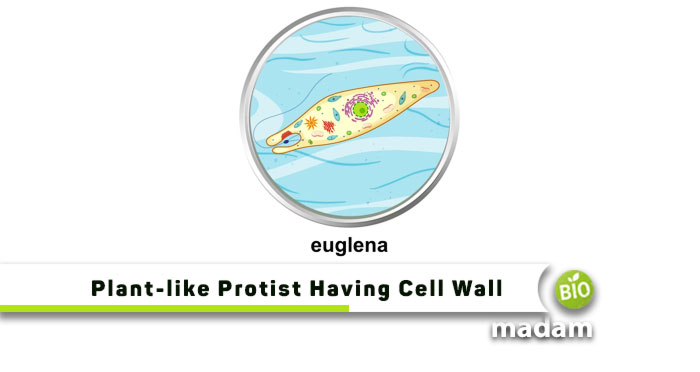In the realm of earth, there are numerous organisms, each with its own distinct characteristics, structures, habitats, and adaptations. All these features are based depending upon their classifications. Among these diverse classifications of organisms and microorganisms is a group that has engaged scientists for centuries called protists. They lie in between the two famous groups, prokaryotes, and eukaryotes. Their unique features set them apart from both these groups and force them to form their own separate kingdom called the ”Kingdom Protista.”
One fundamental question that usually arises is if protists have a cell wall or not. The cell wall is a structure that surrounds the cells and is responsible for providing protection, support, structure, and shape to the cell. It helps to maintain the integrity of the cell. In this article, we will explore whether protists have cell walls or not, so let’s step ahead with us!
What are Protists?
Protists are basically eukaryotes but are different from plants, fungi, and animals. They form a separate group and are mostly unicellular. Some protists are also multicellular. They are considered to be the predecessor of plants, animals, and fungi and have a link with them. They are usually found in water, damp environments or sometimes survive as parasites. Protists possess a well-defined nucleus and highly organized organelles. They reproduce asexually by budding, binary fission, or spore formation. The sexual means of reproduction found in protists is through meiosis or fertilization. Some common examples of protists are Amoeba (Amoeba proteus), Paramecium (Paramecium pentaurelia), Stentor (Stentor coeruleus), and Euglena (Euglena gracilis).
Types of Protists
All the protists are classified into three different types, depending upon their unique characteristics. Below is a briefing of them:
- Animal Like Protists – they are heterotrophs and are motile.
- Plant Like Protists – they are autotrophs and can carry out photosynthesis on their own.
- Fungi Like Protists – they are heterotrophs and reproduce by spore formation.
Characteristics of Protists
Some characteristics are common in all types of protists as are mentioned below:
- All protists are eukaryotes.
- They possess mitochondria.
- They can be parasitic.
- They are usually found in water but can exist in soil and moist environments.
- Primarily, they are unicellular except for kelps which are multicellular.
- All protists have a defined nucleus and membrane-bound organelles.
- They can be autotrophic, heterotrophic, or symbiotic.
- Most protists have cilia and flagella as their locomotory organs; however, some have pseudopodium for locomotion.
- They can reproduce asexually and sexually.
Do Protists Have a Cell Wall?
Most protists do not have a cell wall; however, some protists possess this structure. It depends upon their mode of nutrition. Animal-like protists lack a cell wall, plant-like protists possess a cell wall, whereas not all fungi-like protists possess a cell wall. Only some fungi like protists, e.g., slime molds maintain a cell wall during certain stages of their life cycle.
Which Protists Have a Cell Wall?
Plant-like protists and some fungi-like protists possess a cell wall composed of polysaccharides, silica, calcium, cellulose, calcium carbonate, and other proteins. Some examples of protists having a cell wall are described below:
Diatoms

Diatoms are the type of protists having a cell wall composed of silica. Monomers of silicic acid exist in diatoms which undergo polymerization to produce polymers of silica. These silica polymers are excreted out to form the cell wall. Their cell wall is also referred to as frustules or tests as the diatom consists of two cell halves so that one half fits within the other.
Caulerpa
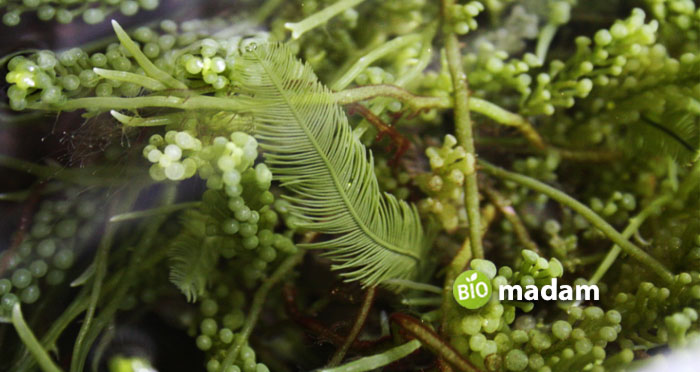
They are a type of green algae or seaweed. The cell wall of Caulerpa consists of D-xylose and pectin. Their cell wall extends into the cytoplasm of the cell.
Volvox
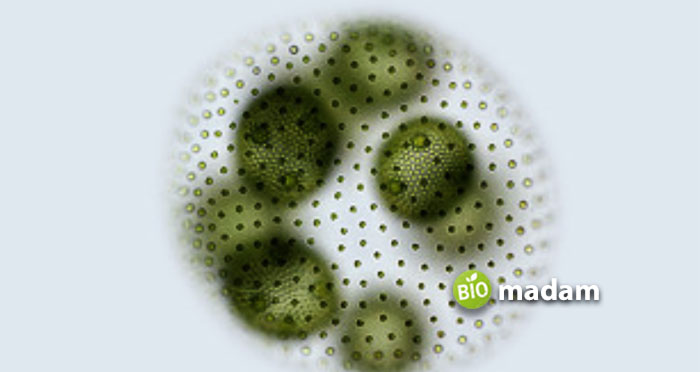
Volvox live in the form of colonies whose cell walls are connected forming intercellular bridges between the cells. Their cell wall is composed of glycoproteins.
Spirogyra
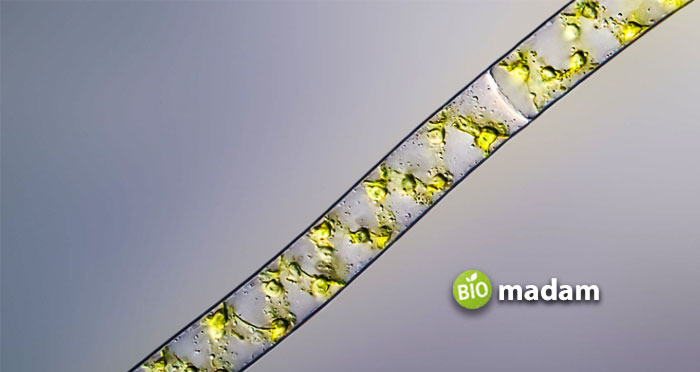
Spirogyra is unicellular filamentous algae having a two-layered cell wall. The inner layer of the cell wall is composed of cellulose, while the outer layer is composed of pectin. A layer of mucilage covers these filamentous colonies of spirogyra.
Charophytes
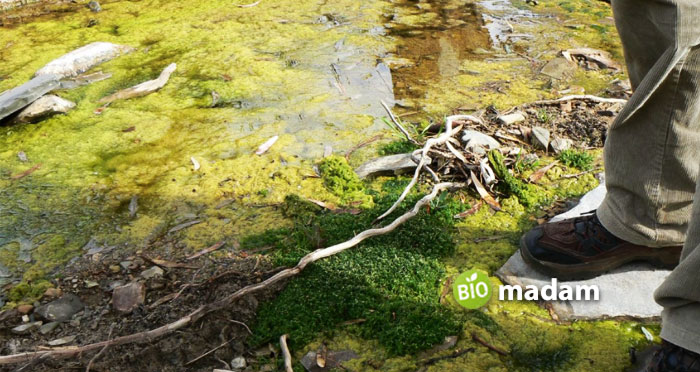
Charophytes are also known as brown algae and possess a cell wall composed of hemicellulose, glucuronic acid, mannuronic acid, and rhamnose. These components prevent the charophytes from desiccation.
Which Protists Lack a Cell Wall?
Just like animals, animal-like protists lack a cell wall. These include Amoeba proteus, Paramecium spp., Plasmodium, Trichomonas, and Trypanosoma. As we already have understood before, all plant-like protists have a cell wall but there are some exceptions. One plant-like protist which lacks a cell wall is Euglena.
Euglena is a unique photosynthetic green alga that lacks a cell wall but possesses a pellicle that acts like a cell wall. Pellicle is a proteinaceous structure found around the Euglena. It acts like an elastic membrane and surrounds the whole body of the organism. It surrounds the cytoplasm and helps in providing mobility and shape to it.
Characteristics of the Cell Wall in Protists
Some common characteristics found in the cell walls of protists are:
- The cell walls of protists allow the colonies of the protists to act as a single unit.
- They are composed of a variety of polymers.
- Cell walls provide turgidity to the cells. This can prevent them from dying or bursting out in response to any change in osmolarity.
- The cell wall acts as a barrier and protects the cell from any pathogen or external molecule.
- The cell wall plays a key role in providing the shape and structure of the cell.
- They protect the cell from the external environment, desiccation, or wear and tear.
Do Protists Have a Permeable Cell Wall?
Protists are responsible for regulating molecules entering and exiting the cell thus they have a permeable cell wall. This permeable cell wall allows the passage of molecules. There are different methods by which molecules permeate through the cell wall. These methods depend on the type of cell wall. In diatoms, the cell wall has slits in them which allow the disposal of waste and helps in the production of mucilage.
Why Do Protists Have a Cell Wall?
Not all protists have a cell wall, but only those have it that resemble plants or fungi. They are autotrophs, meaning that they have to obtain their energy from photosynthesis without moving around. Organisms living sedentary lifestyles require far more protection than animals that move around to catch their prey. The cell wall came into existence as a result of evolution to prevent protists, plants, or fungi from the harsh environment.
Why Do Some Protists Lack a Cell Wall?
Some protists lack a cell wall due to the course of evolution. Just like animals, animal-like protists lack a cell wall as they have to move around a lot to catch their prey. Animals are adapted to swim, walk, crawl, hop, run, or fly. Having a rigid structure surrounding their cells can prevent them from this movement. Protists like amoeba move by using pseudopodia, but things might turn another way around if they ever possessed a cell wall. The lifestyles and habitats of different organisms allow them to evolve over time.
Conclusion
Protists are eukaryotic unicellular or multicellular organisms. They are either autotrophs, heterotrophs, or symbionts. All protists possess a proper nucleus and membrane-bound organelles. Protists either have a cell wall or lack a cell wall it depends on their type. Most plant-like protists and some fungi-like protists have cell walls, whereas animal-like protists lack cell walls. This change in their structures is due to the course of evolution. The cell wall is responsible for providing protection, support, and shape to the cell. Some protists which have a cell wall include diatoms, charophytes, volvox, etc. The cell walls of most protists are composed of polysaccharides, cellulose, and proteins.

Anna has completed her degree in Pharmacy from the University of Hawaii. She is serving as a research assistant in a pharmaceutical company. She had a great interest in writing blogs, traveling to different parts of the US, and trying delicious recipes in her spare time.

